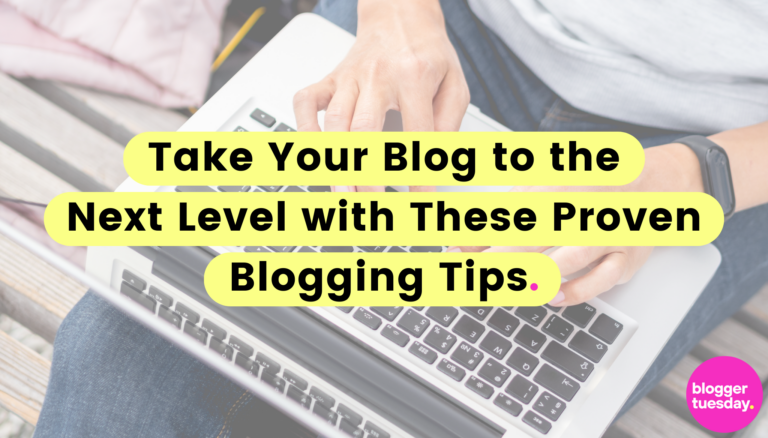Anyone can set up a blog. It technically only takes minutes to get everything up and running so you can publish your first post. But not everyone can make their blog successful. Of course, running a blog is just fun for some people. However, if you’re someone who wants to grow an audience and even monetize your blog, it takes a bit more than just occasionally posting about something that takes your interest. You have to be more purposeful in how you run your blog if you want it to be successful.
You might have your blog up and running already and maybe you’re seeing some traffic coming in too. But if you want to take your blog to the next level, take a look at these tips that have been proven to boost blogs, increase traffic and help with monetization.
Image from Pexels – CC0 License
Narrow Your Niche
Finding a niche is one of the most important parts of starting a blog. You’re probably already publishing content within a certain niche, but it’s also worth considering whether you should niche down even further. Maybe you’ve posted some content that has received more attention than everything else. This could be a sign that you should be focusing on similar content, specializing in something more specific instead of sticking to a broader subject.
It’s not uncommon to begin a blog by covering a fairly broad range of subjects. You might start a general lifestyle blog and explore a range of topics that fall under that umbrella. But you could soon find that focusing on something a little more specific can work better for you. There are multiple benefits to narrowing down your niche, including targeting the right audience more easily and finding the best partners to help you monetize your blog.
Be More Consistent
Consistency really is key when it comes to making a blog more successful. If you visit a blog, is it going to engage you more if there’s a post every week or a post every few months? Regular posting is a must for SEO purposes, helping to keep your blog relevant and visible in search engine results.
44% of bloggers publish new content between 3 to 6 times per month. Publishing more frequently could benefit your blog, but you also have to get a good balance. Trying to publish too often could mean you struggle to keep up. Your readers might not be interested in reading new posts every day, either. Of course, how often you post can be influenced by how long your posts are and what sort of content you’re publishing. But however often you post, being consistent about it is what’s important.
Create an About Page
Showing your readers that you’re trustworthy and building a brand are both part of growing a successful blog. One of the surprising things that might help you out is creating an “about” page that tells your readers about you and your brand. Depending on how you set up your blog, this page might focus on you personally or it could be a more general page about your brand or business. If you have other writers or staff, it could include short profiles about them too.
Optimize for All Devices
All websites these days should be optimized so that they display correctly on any device. People use their phones, tablets, laptops and more to browse blogs and other sites. If your blog doesn’t look or work right on screens of different sizes and in different browsers, it can really turn off visitors.
Responsive website design is a must for your blog. If you use WordPress, you can choose a responsive theme. Other blogging websites and website builders also offer easy ways to make the design of your blog responsive so it works on various devices.
Image from Pexels – CC0 License
Up Your Image Game
What your blog looks like, and what individual posts look like, can be just as important as their content. Including images in your posts can immediately boost their performance. Bloggers who use at least 7 images per post are more than 2x likely to report strong results from their posts. So adding images to your posts can keep your readers reading and even encourage them to share your posts.
An easy way to add images is to look for royalty-free stock images. You can also pay for stock images if you’re willing to fit them into your budget. But if you want to have unique images, you might prefer to make your own. Learning some basic photography and editing skills is a great idea if you want to include your own photos. This might work for blogs such as travel blogs, food blogs, or craft blogs, where it makes sense to share your own photos. Another option is to create graphics. Canva is an excellent free site for this, allowing you to put together stylish images without having any professional graphic design skills.
Make Your Posts the Right Length
How long should your posts be? Getting this right can be tough. On one hand, search engines like Google like longer posts. On the other hand, readers often don’t prefer long posts. Engagement time starts to drop for posts that have a reading time longer than 7 minutes. Meanwhile, the majority of people (73%) say that they only skim blog posts, rather than reading them thoroughly.
So how long should a blog post be? On average, they tend to be somewhere between 1,000 and 1,500 words. However, that doesn’t mean they can’t be shorter or longer. What matters is that they’re the right length for your audience and an appropriate length for the topic of the post. A longer post can be justified if that’s what it takes to thoroughly cover a topic. Experimenting with different blog post lengths can help you find out what really works for your blog.
You can always find ways to improve your blog. Use methods that work for others so that you can make your blog a success too.


